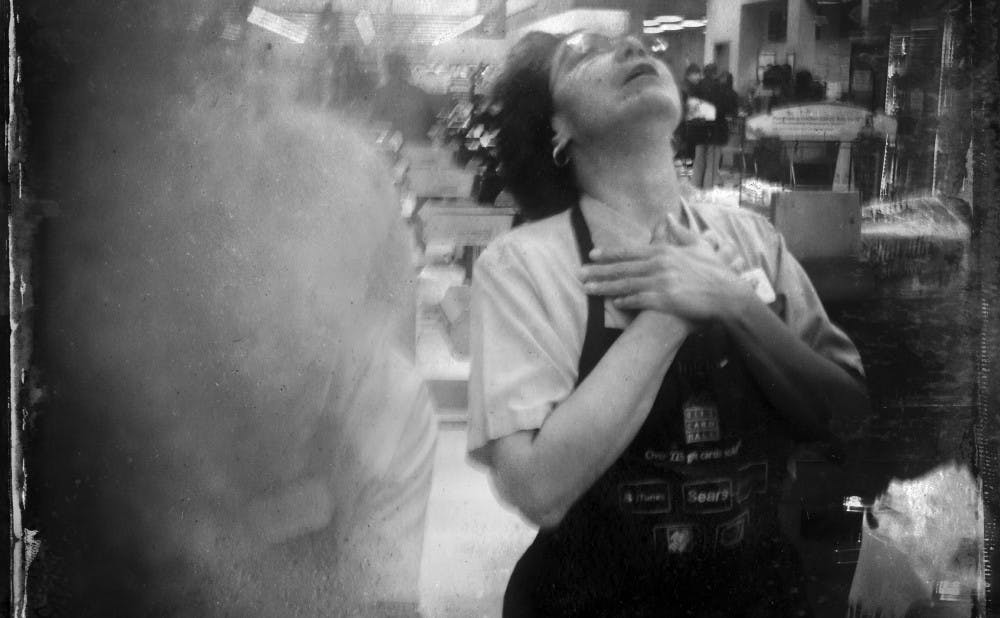The South Side of Chicago is a part of America that has infamously been in the news for a variety of social issues. From violence to mass public school closings, these news briefs shape people’s perceptions about the lower part of the Windy City. However, Jon Lowenstein’s newest exhibition “South Side” to be displayed in the Center for Documentary Studies aims to expose audiences to another side of the South Side—one about a community fighting to maintain order and dignity despite being systematically deconstructed through gentrification.
Lowenstein’s “South Side” is the recipient of the 2014 Dorothea Lange-Paul Taylor prize awarded by CDS. The prize is given to documentary artists whose works exemplify the artistic styles embodied by renowned photographer Dorothea Lange and social scientist Paul Taylor, whose “extended fieldwork projects relied on the interplay of words and images," according to CDS.
“South Side” combines photography, prose, video and audio to create an immersive media experience that introduces the audience to a post-industrial Chicago over the course of the past 10 years. While Lowenstein, who has lived on the South Side for 10 years and in Chicago for 20, notes the noticeable violence and economic issues in the South Side communities, he hopes that his immersive media piece creates a dialogue about how the South Side is still affected from the results of segregation and socioeconomic disparities and contextualizes the personal narratives in the community beyond just what the popular media may say about the South Side.
“I’m trying to give a whole visual and listening experience,” Lowenstein said. “I’ve spent years photographing many people in the community and listened to oral history. When you walk into the exhibition space and feel the images, there’s also a strength and resiliency in the piece.”
Through his time living there, Lowenstein has clearly grown invested in the social structure and culture of the area and has witnessed the its recent gentrification. Slowly but surely, wealthier and more artistic individuals and companies buy the cheaper land in these lower socioeconomic neighborhoods and move in, and cause the original social groups to leave the area.
With its designated space in CDS, the Lange-Taylor Prize allows Lowenstein to reach broader audiences here in Durham. CDS Exhibitions Director Courtney Reid-Eaton is currently working with Lowenstein to build the final exhibition from his collective body of work on the South Side. Reid-Eaton praised the work for its ability to take these various themes and social issues found in the South Side and adroitly construct them through multimedia work.
“I really appreciate how exciting, complicated and layered the images are and how Jon wants to use them to support his community,” Reid-Eaton said.
Lowenstein noted that many people still do not want to visit the South Side because of its violent reputation. However, in regard to the spirit of the area, he wants to bring attention to the “incredible people who are not served by the larger political structure of today’s society.” Primarily, he finds that his community has unequal opportunities to access health care and education compared to many other Americans, which has greatly engendered progress in the South Side.
“The photography the story the video address these issues that are elemental to American society,” Lowenstein said. “Chicago is one of the most American of all cities, but how do we treat the places that are left behind and how does this truly affect the health of our country?”
While Chicago and Durham are inherently two different communities, Lowenstein believes that there are always parts of every community that are “left behind” and that his piece deals with how we connect to each other in light of social issues.
“Durham will relate to the gentrification that happens in much of the United States,” Reid-Eaton said. “Some people see it as a positive thing that new business open and new people come to area. Others see it as driving out people who used to live there.”
Lowenstein noted that many of his photos and narratives depict the lives of black Americans, and how they navigate their community in light of their social environment. Similarly, the “South Side” exhibit contributes to the conversations brought up by the social movements of today such as the Black Lives Matter movement and protests following instances of violence in Ferguson, Mo., New York and South Carolina.
“There’s lots of ways to enter the conversation about the issues in this country… and how we connect to each other,” Lowenstein said. “Your community may not be their community, but what I’ve been blown away by are how these issues are affecting people all over the country.”
Jon Lowenstein’s “South Side” opens Oct. 29 and runs until Feb. 27 at the Center for Documentary Studies. Lowenstein will give a talk about his exhibition followed by a reception at the opening Thursday at 6 p.m.
“Come to an open heart and open mind and see what they see, and how they want to help and move our country forward,” Lowenstein said. “Everybody has to do their little part.”
Correction: This article was updated to reflect that Lowenstein has lived in the South Side for 10 years and in Chicago for 20 years overall. It was also updated to clarify that the 'South Side' project has not been affiliated with the Black Lives Matter movement. The Chronicle regrets the error.
Get The Chronicle straight to your inbox
Sign up for our weekly newsletter. Cancel at any time.

